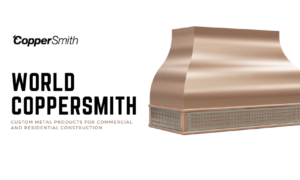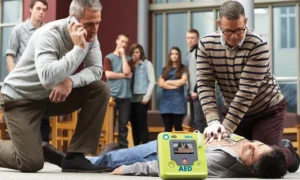Every year, thousands of people in Minneapolis find themselves involved in car accidents that disrupt their lives and lead to physical, emotional, and financial turmoil. In some cases, insurance covers the damage and life moves on.
But when injuries are serious or liability is disputed, you may need to take legal action to recover what you’ve lost. Filing a personal injury lawsuit may seem intimidating, especially if you’ve never set foot in a courtroom. But knowing what to expect from the process can ease your anxiety and help you make smarter decisions.
This guide walks you through every stage of a car accident lawsuit in Minneapolis—from the moment of impact to the final resolution—so you can understand how your claim may unfold and why a skilled Minneapolis personal injury lawyer is so important.
What Happens Immediately After the Crash
The legal process actually begins at the accident scene. Minnesota law (Minn. Stat. § 169.09) requires that you stop and exchange information if you’re involved in a crash. If the accident causes injury, death, or significant property damage (over $1,000), it must be reported to law enforcement immediately.
Here’s what to do right away:
- Call 911 to report the accident and request emergency services
- Move to safety, if possible, without leaving the scene
- Exchange contact, license, and insurance information with the other driver
- Take photos of vehicle damage, license plates, the surrounding area, and any visible injuries
- Get contact info from any witnesses
- Avoid admitting fault or speculating about the cause
The police report and evidence you collect will form the foundation of your car accident claim. It’s also essential to seek medical attention right away, even if you feel fine—some injuries aren’t immediately apparent.
Understanding Minnesota’s No-Fault Insurance System
Minnesota is a no-fault insurance state. This means that your own auto insurance policy pays for your medical expenses, lost wages, and certain other out-of-pocket costs, regardless of who caused the crash. This coverage is called Personal Injury Protection (PIP).
As of 2025, the minimum required PIP coverage in Minnesota includes:
- $40,000 per person per accident ($20,000 for medical expenses and $20,000 for lost wages or other costs)
However, PIP doesn’t cover pain and suffering or full long-term care. To pursue those damages, you must meet one of the thresholds that allow you to step outside the no-fault system and sue the at-fault party. These thresholds include:
- Medical expenses exceeding $4,000 (excluding diagnostics like X-rays or MRIs)
- Permanent disfigurement or scarring
- Permanent injury or disability
- Death
- At least 60 days of disability
If you meet any of these criteria, you may pursue a personal injury claim against the other driver.
Why You Should Call a Minneapolis Personal Injury Lawyer Early
Some people try to handle the claim themselves, only to realize too late that they’re in over their heads. Insurance companies are businesses—not advocates. Their adjusters are trained to minimize payouts. They may pressure you into giving a recorded statement or accepting a lowball settlement early on.
That’s why contacting a Minneapolis personal injury lawyer as soon as possible is critical. An attorney can:
- Protect your rights
- Help you avoid costly mistakes
- Handle communication with the insurance companies
- Accurately calculate your damages
- Collect and preserve critical evidence
- Ensure you meet all filing deadlines (including the 2-year statute of limitations under Minn. Stat. § 541.07)
The sooner a lawyer is involved, the stronger your case is likely to be.
The Investigation Phase: Building the Case
Once you’ve hired a lawyer, they will begin an in-depth investigation into your accident. This often includes:
- Reviewing the police report
- Interviewing witnesses
- Gathering your medical records and bills
- Requesting employment records to prove lost wages
- Obtaining any available surveillance footage or traffic cam data
- Hiring experts to reconstruct the accident or testify about long-term injury effects
Your lawyer will also assess all available insurance policies, including your own uninsured/underinsured motorist (UM/UIM) coverage, which can be critical if the at-fault driver doesn’t have enough insurance to cover your damages.
Filing a Demand for Settlement
If your injuries have stabilized and the evidence is strong, your lawyer will often try to resolve the matter without a lawsuit. This begins with a demand letter sent to the other party’s insurance company. This letter outlines:
- A summary of the accident and liability
- A detailed description of your injuries and treatment
- The impact the accident has had on your life and finances
- A demand for compensation
The insurer may respond with a settlement offer, which often starts lower than what you deserve. Your lawyer will negotiate on your behalf. If a fair agreement can’t be reached, it’s time to file a lawsuit.
Litigation Begins: Filing the Lawsuit in Court
To formally begin a lawsuit, your attorney will file a complaint with the appropriate court—typically Hennepin County District Court if the accident occurred in Minneapolis. The complaint names the defendant (the at-fault driver), outlines the facts of the case, and requests a specific amount in damages.
Once filed, the defendant is served with the lawsuit and given time to respond. This kicks off the litigation process, which includes several stages:
Discovery: Exchanging Information
The discovery phase allows both sides to gather information through:
- Interrogatories (written questions)
- Requests for documents (such as medical records or phone logs)
- Depositions (in-person questioning under oath)
This phase is where your lawyer may uncover damaging information about the other driver—such as distracted driving or prior violations—and solidify your case.
Mediation and Settlement Negotiations
Before trial, most courts require mediation, where both sides meet with a neutral third party to try to resolve the dispute. Mediation is often successful because it allows for creative solutions and avoids the cost and uncertainty of a trial.
Even after discovery, most cases still settle. In fact, more than 90% of car accident lawsuits in Minnesota are resolved out of court.
Trial: When Settlement Fails
If mediation doesn’t lead to a resolution, your case goes to trial. This can be either a jury trial or a bench trial (decided by a judge). Your attorney will present evidence, call expert witnesses, cross-examine the defense’s witnesses, and argue for your right to full compensation.
You’ll need to prove:
- The other driver was negligent (e.g., distracted, speeding, impaired)
- Their negligence directly caused your injuries
- You suffered real, compensable damages
Minnesota’s modified comparative fault rule applies at trial. If you are found 51% or more at fault, you receive nothing. If you are 50% or less at fault, your award is reduced proportionally. For example, if you are 20% at fault and awarded $100,000, you receive $80,000.
The Verdict and Beyond
If the jury (or judge) finds in your favor, they will award damages, which may include:
- Medical expenses
- Lost wages and earning capacity
- Pain and suffering
- Emotional distress
- Permanent disability or disfigurement
- Loss of enjoyment of life
If the defense loses, they may appeal, which could delay the payment. If you win and the defendant refuses to pay, your attorney can pursue judgment enforcement, such as wage garnishment or asset seizure.
When the At-Fault Driver Is Uninsured or Underinsured
Unfortunately, some Minnesota drivers don’t carry enough insurance. If your damages exceed the limits of the at-fault driver’s coverage, or they have no insurance at all, you may turn to your UM/UIM policy for help. This allows you to recover damages through your own insurer—but they may still push back or undervalue your claim.
Having a Minneapolis personal injury lawyer handle your UM/UIM claim is essential to ensure your policy works as intended.
How Long Does a Car Accident Lawsuit Take?
While every case is different, here’s a general timeline:
- Medical treatment and case evaluation: 1–6 months
- Investigation and demand letter: 1–3 months
- Lawsuit filing and discovery: 6–12 months
- Mediation and potential trial: 3–6 months more
Some complex cases can take over a year, especially if expert witnesses or appeals are involved.
What Can Delay Your Case?
- Delays in medical treatment or obtaining records
- Uncooperative insurance companies
- Disputes over liability
- Scheduling conflicts for court or depositions
Even if it takes time, pursuing a full recovery is worth it when your future and well-being are at stake.
Protecting Your Rights After a Crash
Car accidents in Minneapolis happen in the blink of an eye, but the consequences can last a lifetime. Whether you’re dealing with minor injuries or life-changing trauma, the path to justice can be long and confusing. But you don’t have to walk it alone.
A Minneapolis personal injury lawyer can help you navigate the legal system, fight for every dollar you’re owed, and give you the support you need from crash to court. If you’ve been injured in a car accident, don’t wait. The sooner you seek help, the stronger your case will be.



































